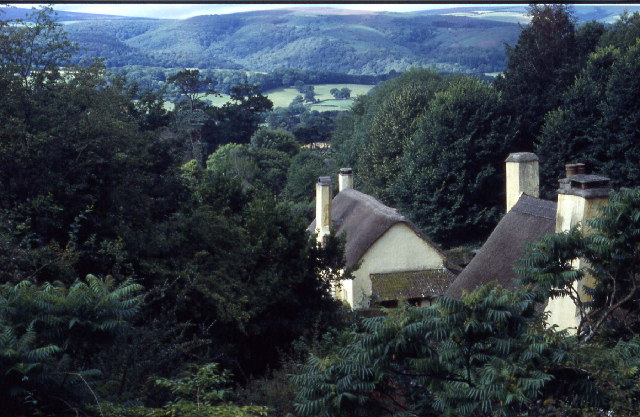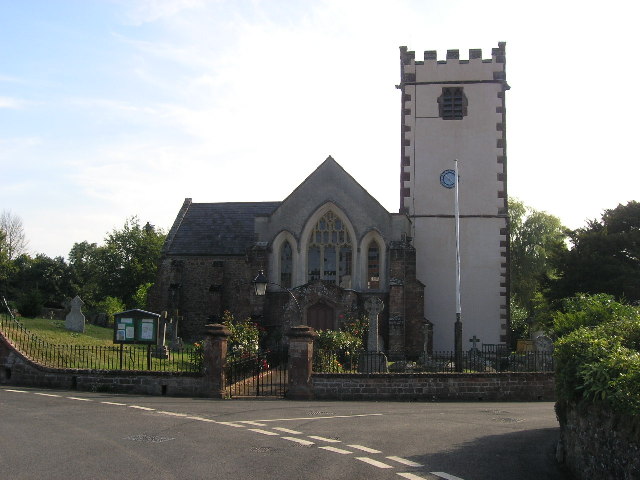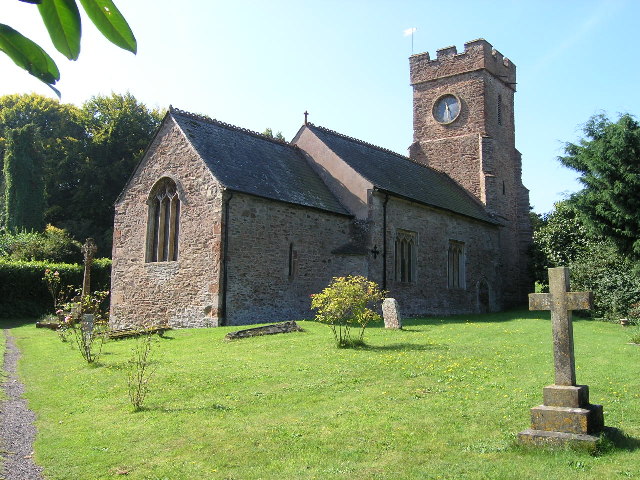|
Williton Rural District
Williton was a rural district in Somerset, England, from 1894 to 1974. It was created in 1894 under the Local Government Act 1894. In 1974 it was abolished under the Local Government Act 1972 when it became part of West Somerset. The parishes which made up the Rural District included Bicknoller, Brompton Ralph, Carhampton, Clatworthy, Crowcombe, Cutcombe, Dunster, East Quantoxhead, Elworthy, Holford, Kilve, Luccombe, Luxborough, Minehead, Minehead Without, Monksilver, Nettlecombe, Oare, Old Cleeve, Porlock, Sampford Brett, Selworthy, Stogumber, Stogursey, Stringston, Timberscombe, Treborough, West Quantoxhead, Williton, Withycombe and Wootton Courtenay. References Williton Rural District at Britain Through Time*Local Government Act 1972 The Local Government Act 1972 (c. 70) is an Act of the Parliament of the United Kingdom that reformed local government in England and Wales on 1 April 1974. It was one of the most significant Acts of Parliament to be passed by ... [...More Info...] [...Related Items...] OR: [Wikipedia] [Google] [Baidu] |
Williton
Williton is a large village and civil parish in Somerset, England, at the junction of the A39, A358 and B3191 roads, on the coast south of Watchet between Minehead, Bridgwater and Taunton in the Somerset West and Taunton district. Williton station is on the West Somerset Railway line. Doniford Halt on the same line serves the nearby Haven Holiday centre. Williton is twinned with Neung-sur-Beuvron in the Loir-et-Cher département of France. History Until 1902 Williton was part of the ancient parish of Saint Decuman, which included also the town of Watchet. The parish of St Decuman was part of the Williton and Freemanners Hundred. Within Williton parish, to the south-west, is Orchard Wyndham House, a Grade I listed building, which was the centre of an estate called "Orchard". Paleolithic, mesolithic and neolithic flints have been found at Doniford to the north-east of Williton while three Bronze Age barrows survive at Battlegore Burial Chamber, just north of the centre ... [...More Info...] [...Related Items...] OR: [Wikipedia] [Google] [Baidu] |
Kilve
Kilve is a village in the Somerset West and Taunton district of Somerset, England, within the Quantock Hills Area of Outstanding Natural Beauty, the first AONB to be established, in 1957. It lies on the A39 almost exactly equidistant from Bridgwater to the east and Minehead to the west. The village includes a 17th-century coaching inn, and a post office and stores. This part of the village, formerly known as Putsham, also contains the village hall, which was extended to celebrate the coronation of Queen Elizabeth II. History The village was listed in the Domesday Book of 1086 as '' Clive'', probably meaning cliff. The parish of Kilve was part of the Williton and Freemanners Hundred. Oil extraction At the far end of the car park are the remains of a red brick retort, built in 1924, when it was discovered that the shale found in the cliffs was rich in oil. The beach is part of the Blue Anchor to Lilstock Coast SSSI ( Site of Special Scientific Interest). Along this coas ... [...More Info...] [...Related Items...] OR: [Wikipedia] [Google] [Baidu] |
Stogursey
Stogursey is the name of a small village and civil parish in the Quantock Hills in Somerset, England. It is situated from Nether Stowey, and west of Bridgwater. The village is situated near the Bristol Channel, which bounds the parish on the north. The parish includes the village of Stolford, which is believed to mean 'The stile ford' from the Old English ''stigol'' and ''ford'', and the hamlets of Burton, Knighton, Shurton, Stoford, Week, and Fairfield. History On the beach near Stogursey are the remains of a submerged forest dated to 2500 B.C. A Romano-British coin hoard was discovered in 1999. It contained 1,097 base silver radiates, the remains of a pottery vessel and 50 copper alloy coins. It takes its name from the manor of Stoke. Medieval ''Stoche'' was in the possession of William de Falaise by 1086, who had recently married Geva, daughter of Serlo de Burci, and widow of Martin "de Wallis". Early in the 12th century, William and Geva's daughter, Emma, was betrothed ... [...More Info...] [...Related Items...] OR: [Wikipedia] [Google] [Baidu] |
Stogumber
Stogumber () is a village and civil parish in Somerset, England, on the eastern flank of the Brendon Hills. Besides Stogumber village itself, the parish includes the hamlets of Ashbeer, Capton, Escott, Higher Vexford, Kingswood, Lower Vellow, Lower Vexford, Preston, and Vellow. The village is on the route of the Samaritans Way South West. History The name comes from the Old English ''Stoke'', meaning 'place' or 'dairy farm', with the addition in 1225 of the personal name ''Gunner''. Approximately north-west of the village is Curdon Camp a univallate Iron Age hill fort. The camp was nearly completely destroyed by quarrying and bulldozing. The parish of Stogumber was part of the Williton and Freemanners Hundred. The manor of Stogumber was held from 1286 by the Andleys family, and later by the Sydenhams (1396–1626) and Notleys (from 1896). Five fulling mills were established in the village between the 13th and 18th century to support the clothmaking industry. A 19th-cent ... [...More Info...] [...Related Items...] OR: [Wikipedia] [Google] [Baidu] |
Selworthy
Selworthy is a small village and civil parish from Minehead in Somerset, England. It is located in the National Trust's Holnicote Estate on the northern fringes of Exmoor. The parish includes the hamlets of Bossington, Tivington, Lynch, Brandish Street and Allerford. At Selworthy Beacon, rising above the village, is one of the highest points on Exmoor. Its height defines as one of the 'marilyns" in England. Near the summit are a series of cairns, thought to be the remains of round barrows, and the British Iron Age Bury Castle. Bossington is separated from Porlock Bay by a shingle beach, through which flows the River Horner, forming part of the Porlock Ridge and Saltmarsh Site of Special Scientific Interest. In the 1990s rising sea levels created salt marshes, and lagoons developed in the area behind the boulder bank. The village is on the South West Coast Path. History The name of the village means "''enclosure or settlement near sallows or willows''". In the Domesday Book i ... [...More Info...] [...Related Items...] OR: [Wikipedia] [Google] [Baidu] |
Sampford Brett
Sampford Brett is a village and civil parish situated at the south-western edge of the Quantock Hills, Somerset, England, less than south of Williton, just off the A358 road to Taunton. Geography It lies in a shallow valley cut by the Sampford stream running from Aller Farm, and its main street runs east–west from the church to the crossroads at the western end. To the south and east of the village there is a good view of the Quantock Hills and it is shielded from the main road by the rising hill to the north. History The village takes the first part of its name from the ''sandy ford'' which crossed the Doniford stream between Sampford Brett and Woolston and the second part from the Brett family, who held the manor from the 12th century until they sold it to the Courtneys in 1359. The parish includes the Domesday manor of Torweston. The parish of Sampford Brett was part of the Williton and Freemanners Hundred. Governance The parish council has responsibility for local is ... [...More Info...] [...Related Items...] OR: [Wikipedia] [Google] [Baidu] |
Porlock
Porlock is a coastal village in Somerset, England, west of Minehead. At the 2011 census, the village had a population of 1,440. In 2017, Porlock had the highest percentage of elderly population in Britain, with over 40% being of pensionable age as of 2010. History East of the village is Bury Castle, an Iron Age hill fort. There is evidence for 10th or 11th century origin for the name Porlock as Portloc or Portloca meaning enclosure by the harbour, from the Old English ''port'' and ''loca'', and in the Domesday Book the village was known as "Portloc". In 914 the Vikings plundered Porlock. Porlock was part of the hundred of Carhampton. The area has links with several Romantic poets, and R. D. Blackmore, the author of ''Lorna Doone'', and is popular with visitors. The visitor centre has exhibits and displays about the local area. Also on display are the bones of an aurochs, discovered on Porlock beach in 1999. Governance The parish council has responsibility for local issu ... [...More Info...] [...Related Items...] OR: [Wikipedia] [Google] [Baidu] |
Old Cleeve
Old Cleeve (https://www.oldcleeveparishcouncil.org/) is a village south east of Minehead in the Somerset West and Taunton district of Somerset, England, and also a civil parish. The civil parish of Old Cleeve covers an area of and includes the villages of Old Cleeve, Blue Anchor, Roadwater and Washford as well as hamlets such as Bilbrook, Chapel Cleeve, Golsoncott and Leighland Chapel. Approximately half the parish lies within the Exmoor National Park. The remaining half is on the southern edge of Exmoor. The village has been in existence since the early 13th century. The village held its first council meeting in 1711. By the 1720s the village had several churches, in which to meet. The town hall was built in 1727. The first church here was built in 1694, built by the Eastern Christian Society. This church was destroyed in a fire in 1847, and has been rebuilt and restored. In 2011, the population of the parish was 1,672. Etymology The name ''Cleeve'', first attested in th ... [...More Info...] [...Related Items...] OR: [Wikipedia] [Google] [Baidu] |
Oare, Somerset
Oare is a village and civil parish on Oare Water on Exmoor in the Somerset West and Taunton district of Somerset, England. It is located east of Lynton and the parish includes the hamlet of Oareford and the village of Culbone which contains its own tiny church. History The village was known as ''Are'' in the Domesday Book of 1086. After the Norman Conquest the manor was granted to Ralph de Pomeray. Later it was held by the Kelly family. Oare was part of the hundred of Carhampton. Governance The parish council has responsibility for local issues, including setting an annual precept (local rate) to cover the council's operating costs and producing annual accounts for public scrutiny. The parish council evaluates local planning applications and works with the local police, district council officers, and neighbourhood watch groups on matters of crime, security, and traffic. The parish council's role also includes initiating projects for the maintenance and repair of parish ... [...More Info...] [...Related Items...] OR: [Wikipedia] [Google] [Baidu] |
Nettlecombe, Somerset
Nettlecombe is a civil parish in the English county of Somerset. The parish covers a rural area below the Brendon Hills, comprising the small hamlets of Beggearn Huish, Torre, Woodford Yarde, together with more isolated individual farms and homes. In 2011, the parish had a population of 174. The village takes its name from Nettlecombe Court, an Elizabethan manor house which was once the manorial centre of the area. There are no shops or other services within the parish, which is instead served by the nearby village of Williton. History The manor was held before the Norman Conquest by Godwin, son of King Harold, and subsequently was the property of the crown. In 1160 it was granted to Hugh de Ralph and has never been sold since. It passed down through the family to John Trevelyan in 1481 and is still held by his successors. The parish of Nettlecombe was part of the Williton and Freemanners Hundred. Governance Administratively, the civil parish falls within the Somerset Wes ... [...More Info...] [...Related Items...] OR: [Wikipedia] [Google] [Baidu] |
Monksilver
Monksilver is a village west of the town of Williton in Somerset, England, on the eastern flank of the Brendon Hills and the border of the Exmoor National Park. The Coleridge Way footpath passes through the village. History The name of the village means ''monk's wood''. In the Domesday Book it was simply ''Selvre'', from the Latin ''silva'' for a wood, although it has also been suggested that ''Sulfhere'', in AD 897, referred to the silvery stream below the village. In 1113 the manor was given by Robert de Chandos to endow Goldcliff Priory, which he had just established near Newport in Monmouthshire . In 1441 it passed, with the priory, to Tewkesbury Abbey and then in 1474 to the canons of Windsor. In the 14th century the name changed to "Monksilver". The parish of Monksilver was part of the Williton and Freemanners Hundred. In the 16th and 17th centuries it was a centre for cloth making and field names such as "Rack", at nearby Woodford, suggest this activity. Governanc ... [...More Info...] [...Related Items...] OR: [Wikipedia] [Google] [Baidu] |
Minehead Without
Minehead Without is a civil parish in the English county of Somerset, and within the Exmoor National Park. As its name suggests, the parish covers a rural area to the west of, but not including, the small coastal town of Minehead. The parish's principal settlement is the hamlet of Bratton. The parish has an area of and in the 2001 census had a population of 60 people in 25 households. There is no church within the parish. The parish was created in 1894 from that part of the civil parish of Minehead which did not become Minehead Urban District. Governance Minehead Without shares a grouped parish council with the civil parish of Selworthy. The parish council has responsibility for local issues, including setting an annual precept (local rate) to cover the council's operating costs and producing annual accounts for public scrutiny. The parish council evaluates local planning applications and works with the local police, district council officers, and neighbourhood watch groups ... [...More Info...] [...Related Items...] OR: [Wikipedia] [Google] [Baidu] |







